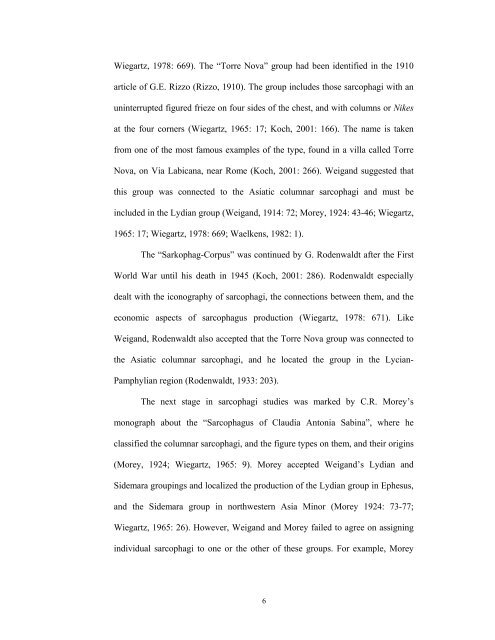To My Family and Uğraş Uzun - Bilkent University
To My Family and Uğraş Uzun - Bilkent University
To My Family and Uğraş Uzun - Bilkent University
Create successful ePaper yourself
Turn your PDF publications into a flip-book with our unique Google optimized e-Paper software.
Wiegartz, 1978: 669). The “<strong>To</strong>rre Nova” group had been identified in the 1910<br />
article of G.E. Rizzo (Rizzo, 1910). The group includes those sarcophagi with an<br />
uninterrupted figured frieze on four sides of the chest, <strong>and</strong> with columns or Nikes<br />
at the four corners (Wiegartz, 1965: 17; Koch, 2001: 166). The name is taken<br />
from one of the most famous examples of the type, found in a villa called <strong>To</strong>rre<br />
Nova, on Via Labicana, near Rome (Koch, 2001: 266). Weig<strong>and</strong> suggested that<br />
this group was connected to the Asiatic columnar sarcophagi <strong>and</strong> must be<br />
included in the Lydian group (Weig<strong>and</strong>, 1914: 72; Morey, 1924: 43-46; Wiegartz,<br />
1965: 17; Wiegartz, 1978: 669; Waelkens, 1982: 1).<br />
The “Sarkophag-Corpus” was continued by G. Rodenwaldt after the First<br />
World War until his death in 1945 (Koch, 2001: 286). Rodenwaldt especially<br />
dealt with the iconography of sarcophagi, the connections between them, <strong>and</strong> the<br />
economic aspects of sarcophagus production (Wiegartz, 1978: 671). Like<br />
Weig<strong>and</strong>, Rodenwaldt also accepted that the <strong>To</strong>rre Nova group was connected to<br />
the Asiatic columnar sarcophagi, <strong>and</strong> he located the group in the Lycian-<br />
Pamphylian region (Rodenwaldt, 1933: 203).<br />
The next stage in sarcophagi studies was marked by C.R. Morey’s<br />
monograph about the “Sarcophagus of Claudia Antonia Sabina”, where he<br />
classified the columnar sarcophagi, <strong>and</strong> the figure types on them, <strong>and</strong> their origins<br />
(Morey, 1924; Wiegartz, 1965: 9). Morey accepted Weig<strong>and</strong>’s Lydian <strong>and</strong><br />
Sidemara groupings <strong>and</strong> localized the production of the Lydian group in Ephesus,<br />
<strong>and</strong> the Sidemara group in northwestern Asia Minor (Morey 1924: 73-77;<br />
Wiegartz, 1965: 26). However, Weig<strong>and</strong> <strong>and</strong> Morey failed to agree on assigning<br />
individual sarcophagi to one or the other of these groups. For example, Morey<br />
6
















